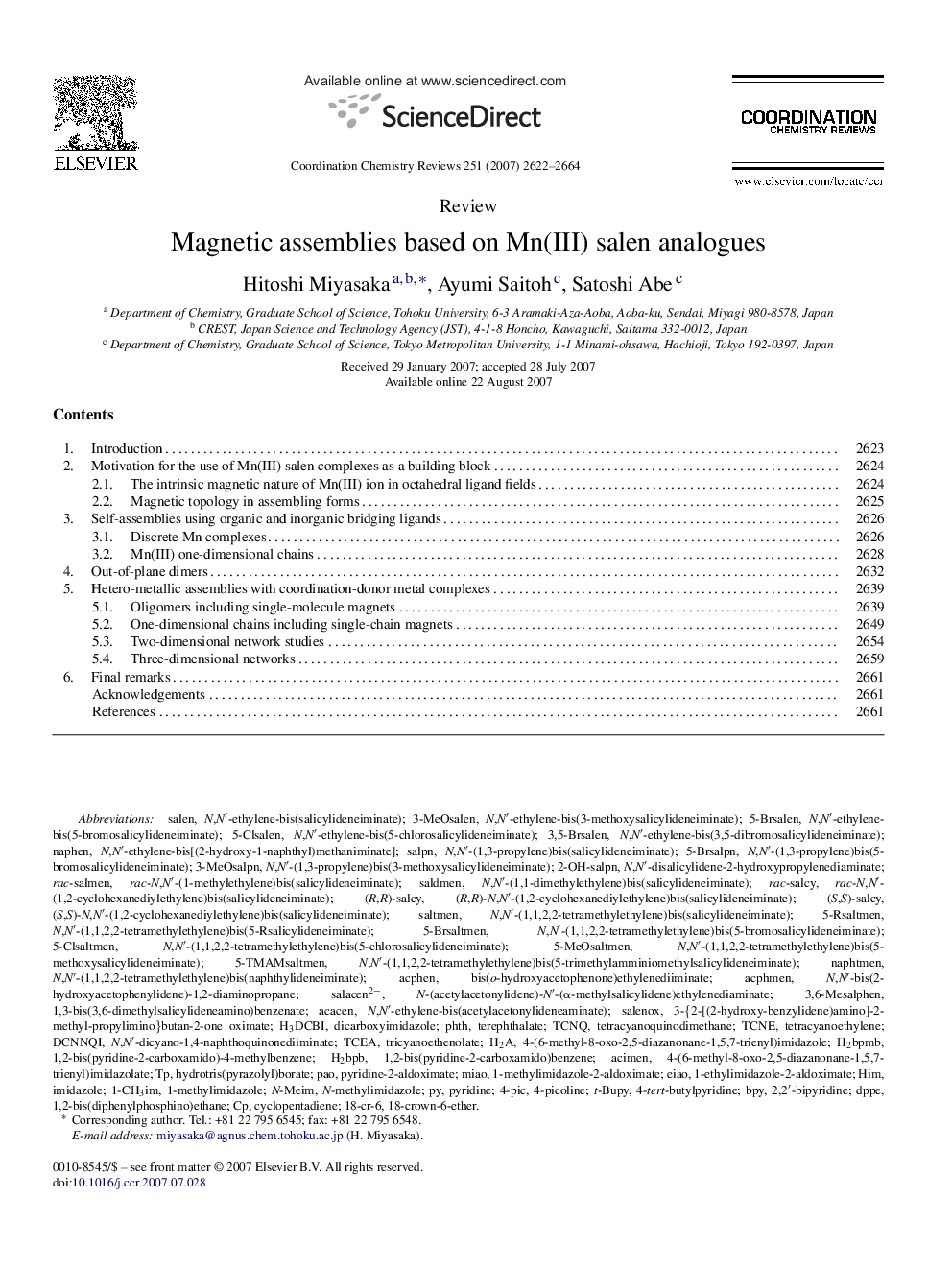| Article ID | Journal | Published Year | Pages | File Type |
|---|---|---|---|---|
| 1300467 | Coordination Chemistry Reviews | 2007 | 43 Pages |
Abstract
Assembled Mn(III) salen-type quadridentate Schiff-base (SB) complexes, [MnIII(SB)]n+, with various metal-containing/non-metal building blocks and their synthetic strategies are summarized. With the Mn(III) salen-type complexes, it is possible to have two coordination labile sites in trans- or cis-position as the SB ligand takes a quasi-planar chelate form and a stereoscopic chelate form, respectively, being a coordination-acceptor building block. Particularly in the quasi-planar form, the coordination labile sites face the direction of the Jahn-Teller elongated axis occupying the dz2 orbital with an unpaired electron. Due to this characteristic orbital arrangement, the activity and magnetic-electronic properties of the Mn(III) salen-type complexes can be tuned, at will, by modulating the SB ligand that is equatorially located around the Mn(III) ion and coupled with the empty dx2ây2 orbital. Both the structural aspects, and magnetic characteristics of assembled compounds are of great interest. This point is the main theme in this review. The high-spin Mn(III) salen-type complexes (SÂ =Â 2) display strong magnetic uniaxial anisotropy, in which the magnetic easy axis can be unambiguously found as the Jahn-Teller axis. Thus, out-of-plane assembly of the quasi-planar Mn(III) salen-type complexes makes it possible to align the easy axes of the Mn(III) ions. This strategy creates unique magnetic systems involving molecular superparamagnets such as single-molecule magnets and single-chain magnets. So far, variously assembled systems employing Mn(III) salen-type complexes as oligomers, one-dimensional chains, and two- or three-dimensional networks have been designed. By following this review, we would know that the Mn(III) salen-type complexes have the potential as a versatile magnetic source for the design of unique magnetic materials with multiple assembling structures.
Keywords
Related Topics
Physical Sciences and Engineering
Chemistry
Inorganic Chemistry
Authors
Hitoshi Miyasaka, Ayumi Saitoh, Satoshi Abe,
